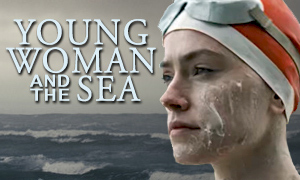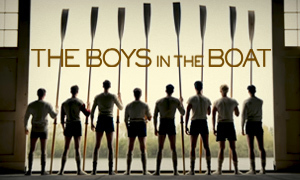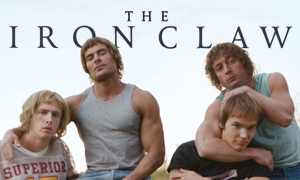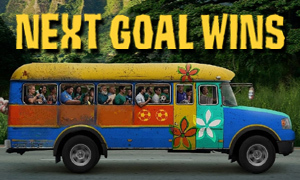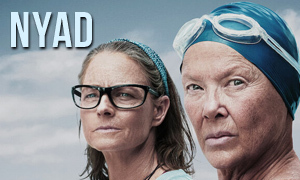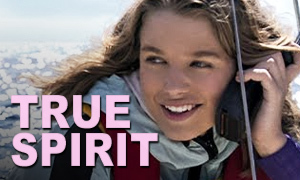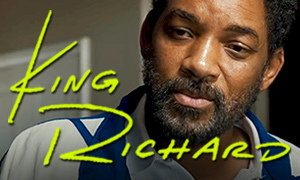Dream Horse: History vs. Hollywood
Movie Horse(s)
Several horses were used to depict Dream Alliance. Bo was the main horse.
Dream Alliance
Born: 2001
Birthplace: South Wales, England, UK
Toni Collette
Born: November 1, 1972
Birthplace:
Sydney, New South Wales, Australia
Jan Vokes
Birthplace: UK
Owen Teale
Born: May 20, 1961
Birthplace:
Swansea, West Glamorgan, Wales, UK
Brian Vokes
Birthplace: UK
Damian Lewis
Born: February 11, 1971
Birthplace:
St. John's Wood, London, England, UK
Howard Davies
Birthplace: UK
Bio: Racing Manager/Local Tax Adviser
Joanna Page
Born: March 23, 1977
Birthplace:
Treboeth, Swansea, Wales, UK
Angela Davies
Birthplace: UK
Nicholas Farrell
Born: 1955
Birthplace:
Brentwood, Essex, England, UK
Philip Hobbs
Born: July 26, 1955
Birthplace: UK
Dream Alliance's Trainer
Was Jan Vokes really working as a barmaid when she got the idea to breed a racehorse?
Yes. The Dream Horse true story confirms that back when Janet 'Jan' Vokes got the idea to breed a racehorse, she was working as a barmaid at a workingmen's club in a once-thriving coal-mining village in Cefn Fforest, Wales. This was around the year 2000. Jan is portrayed by Toni Collette in the movie.
Is Dream Horse based on a book?
The movie is based on the 2015 documentary and Sundance favorite Dark Horse, which tells the story of the real Jan Vokes and the Dream Alliance racehorse.
How did Jan Vokes come up with the idea to breed a racehorse?
She got the idea after overhearing Howard Davies (portrayed by Damian Lewis in the movie) talking about a racehorse he had once owned with his brother about 20 years earlier. Unfortunately, Davies' own limited experience with horse racing had been a financial disaster, which made him hesitant to become involved with another horse. Davies, who worked as a local tax adviser, would end up becoming the "racing manager" of Jan Voke's Dream Alliance syndicate.
Did Jan Vokes pay only £350 for the mare that she used to breed Dream Alliance?
Yes. Jan Vokes' husband, Brian Vokes, found the mare, Rewbell, which was initially available for £1000. The discounted price was partially the result of a barbed-wire injury, which had left the horse's legs scarred. Rewbell also had a nasty temperament and had never won a race. They negotiated the owner down to £300 and Jan added a £50 tip for luck. They ultimately ended up paying just £350 for the horse.
Is it true that Jan Vokes had no experience with horse breeding prior to acquiring Dream Alliance?
Yes. Prior to her racehorse Dream Alliance, Jan Vokes' breeding experience had been primarily with whippets and racing pigeons, which she had done as a side business. After she and her husband purchased the mare Rewbell for £350, they eventually bred her to Bien Bien, a retired American thoroughbred racehorse, for a stud fee of £3000. The young chestnut foal, which they would eventually name Dream Alliance, was born on a disused allotment on an old slagheap in South Wales in 2001. It had a far less pampered upbringing than most champion racehorses (Wales Online).
Why was the horse called 'Dream Alliance'?
The Dream Horse true story reveals that the name refers to the 'alliance' of friends and local townspeople who helped to fund the horse's training. Jan Vokes came up with the name, saying "we're all an alliance, and this is our dream." He was a working-class racehorse who was about to go up against the best. The group of owners was officially named the Alliance Partnership.
How many people were part of the group who helped to fund the training of Dream Alliance?
In real life, there were a total of 22 people (some sources cite 23) who became part of the syndicate known as the Alliance Partnership that funded the training of the Dream Alliance racehorse. They included a garage owner, six tax consultants, a restaurateur, four retired people, a painter, a taxi driver, a decorator, three factory workers, a mortgage adviser, a bailiff, a Royal Mint storeman, and a property developer. The syndicate was put together by Howard Davies, who was given the title of "racing manager." He is portrayed by Damian Lewis in the Dream Horse movie. -Wales Online
How much did Jan Vokes ask people to contribute to help with the training of Dream Alliance?
Like in the movie, the Dream Horse true story confirms that Jan Vokes asked a group of friends and drinkers from the local working men's club to contribute £10 a week so that Dream Alliance could be trained. Howard Davies figured out that it would cost roughly £15,000 per year to pay for the horse to be trained. He reasoned that if they got 30 people to each put in £10 per week, it would be enough. Like in the movie, Jan Vokes also worked at a supermarket to help fund the racehorse.
Who trained Dream Alliance?
Respected racehorse trainer Philip Hobbs began training Dream Alliance when the horse was three years old. This was after the collective had raised enough money to pay for the training costs.
Did Dream Alliance overcome a life-threatening injury?
Yes. Dream Alliance tore a tendon in a preparatory race for the 2008 Grand National at the Aintree Festival. In an effort to save Dream Alliance from being euthanized, Howard Davies convinced the group that the horse undergo a new stem cell treatment, which ultimately allowed the tendon to heal. Money from Dream Alliance's previous winnings was enough to pay for his surgery and the 15 months of rehabilitation that followed. The racehorse resumed training in July 2009.
Did Dream Alliance win the 2009 Welsh National?
Yes. After recovering from his injury, Dream Alliance went on to win the 2009 Welsh National by three-quarters of a length. His victory earned the group of 22 people, who were paying £10 a week for his training, a prize of £57,000. Watch footage of Dream Alliance winning the 2009 Welsh National.
"It's hard to believe that something that started as a conversation in a bar has grown into something so wonderful," Jan Vokes told Wales Online in 2010.
When was Dream Alliance retired?
Following the 2010 Grand National, the Dream Alliance racehorse was discovered to have a lung condition. He competed in seven more races but did not place. In 2012, his consortium of owners decided it best that he be retired. -The Telegraph
How many races did Dream Alliance compete in and how much did he win?
Dream Alliance competed in a total of 30 races and was awarded £138,646 in prize money (Racing Post). Subtracting his training costs and medical bills, each person in the group of 22 "owners" made a profit of £1430 (The Telegraph).
Is Dream Alliance still alive?
Yes. As of 2015, Dream Alliance was living out his retirement in Somerset, England and was being taken care of by the horse groom who worked for Philip Hobbs, Dream Alliance's trainer. The groom had cared for Dream Alliance during his racing career. -The Telegraph
Did Jan Vokes get another horse after retiring Dream Alliance?
Yes. Vokes acquired a foal in 2015. She gave the colt a temporary stable name of Rodney. "We've got a new syndicate together," she said. "It will be £15 a week and we've got a waiting list for people who want to join." According to the BBC, Vokes planned to care for Rodney in between her two cleaning jobs.
Dream Alliance Races & Related Videos
Expand your knowledge of the Dream Horse true story by watching the real Dream Alliance compete in the 2009 Welsh National. Also, watch trailers for the movie and the Dark Horse documentary.
Link-to-Learn More:
